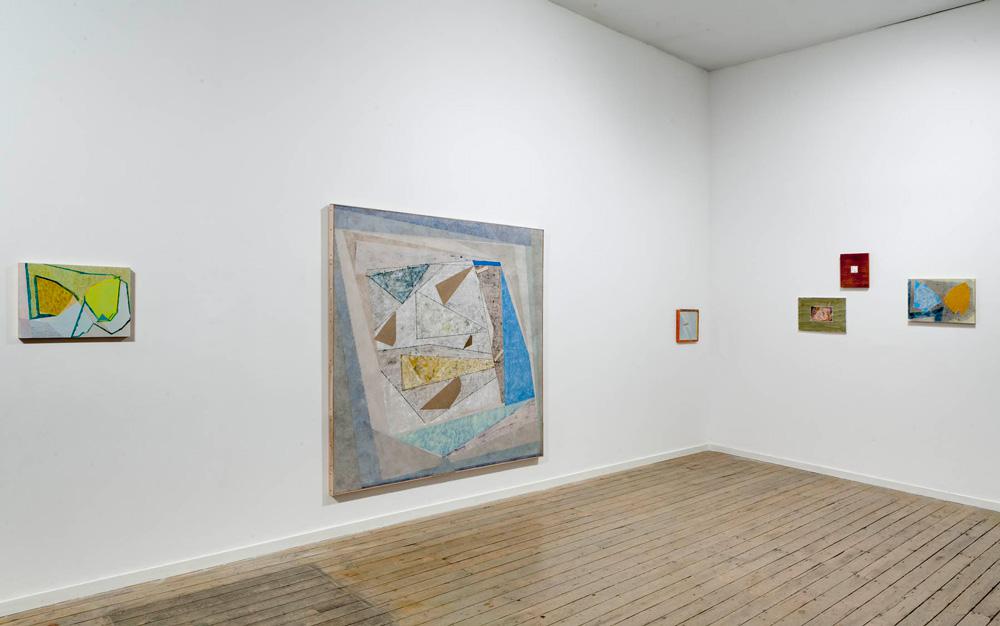The title of Patrick Howlett’s exhibition “How Hummingbirds Choose Flowers” at Susan Hobbs Gallery refers to how hummingbirds, which have almost no sense of smell, rely on colour and form cues to find flowers. It also evokes how, in their constant search for food, hummingbirds are always open to new sources.
Accordingly, Howlett’s collection of work here employs many different media, comprising egg tempera paintings, watercolours, drawings, a cyanotype, as well as a few slightly older selections and pieces that vary greatly in scale. Because the works are hung dynamically at various heights and at uneven increments, viewers are prompted to shift position frequently and to navigate the exhibition in unique, roundabout ways.
The space of each work seems to unfold according to an inner logic. Each piece is populated with lines and planes that converge at sharp angles, creating triangular, jagged figures. Like the pointer on a dial, a triangle always points to another part of the space, away from its centre. As a result, Howlett’s lines seem to endlessly wander; they ricochet around the canvas, sometimes revisiting the same parts, their destination unsure. Some lines and forms bleed over the edges of their canvas or support, while others stutter as if they’ve been digitally pixellated.
Overall, Howlett’s works seem to be executed with both exuberance and caution. In one light, they appear frail, delicately worked into being over an indeterminate amount of time. But the fact is that these paintings are far from timid; Howlett’s approach relies on intuitiveness, play and voracious experimentation. This strategy aims to test any given painting’s own internal logic, as well as test the broader limits of what an abstract painting can be.
Perhaps this attraction to experimentation explains why Howlett decided to exhibit such diverse work. Though each piece may initially read as an abstract painting, many utilize drawing media such as charcoal, pencil and crayon; others use collaged elements. chrysanthemums (2008–12), for example, might appear to be a monochromatic watercolour until one notices the lack of brushwork—its blue “washes” are actually cyanotype pigments.
Like many of its works, the exhibition “How Hummingbirds Choose Flowers” is elusive, set at a slight distance from the expected, and also at a slight distance from the real. It references not only early modernist painting and the digital information age, but also the objecthood of painting. This association to the object comes through in the way that Howlett may only paint on a small, considered area of a stained wood panel, or may extend a composition onto the sides and frames of a work.
The general effect of the show is well demonstrated by Howlett’s suppression (2010–12). Composed of shimmering, subtle, silvery gray geometric shapes, suppression offers a field of pale colours that the eye requires time to adjust to. As a result, viewing the work recalls the experience of waking up in a bright room, where for a first moment, everything is simply hazy fields of light and the walls, windows and shadows are nothing but clusters of abstract shapes.
Moving closer to suppression, however, its shimmering surface reveals itself to be a dense web of pencilled cross-hatching. This work allows for a suspension of the real, permitting the viewer to indulge in the movement of lines, patterns and illusions—always knowing, however, that at any moment the experience can fold back into the real, material world again.









